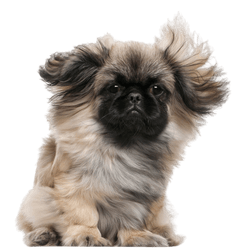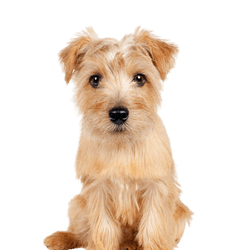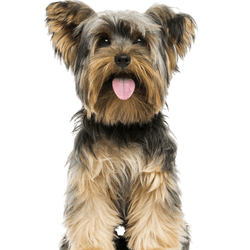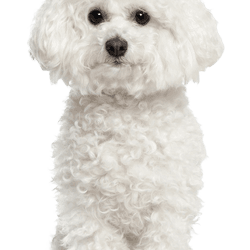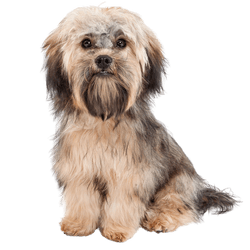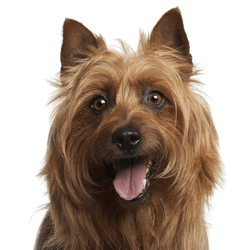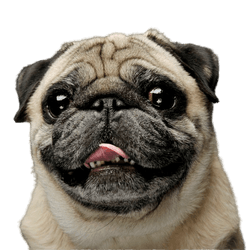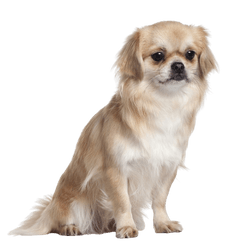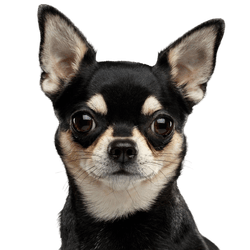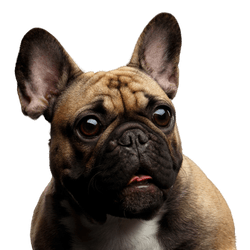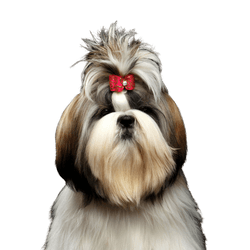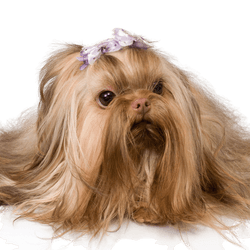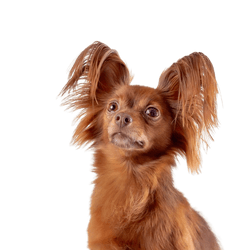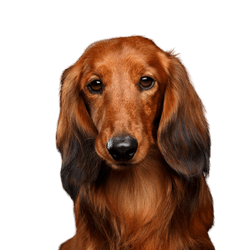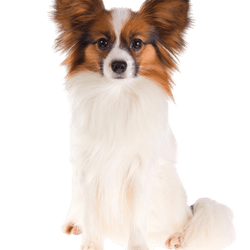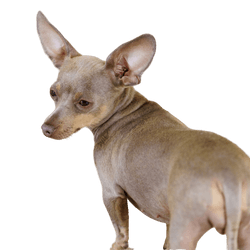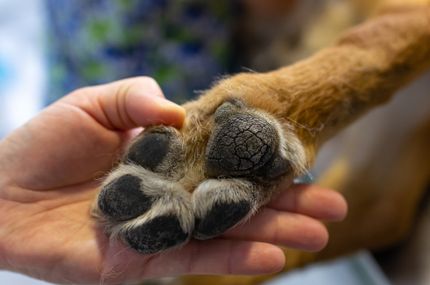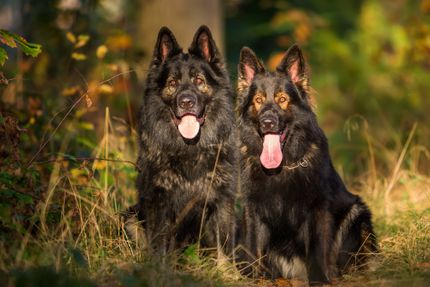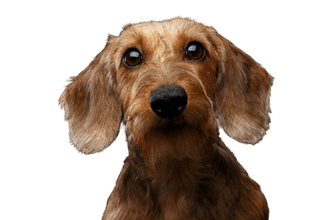
Dachshund Breed description: Character & Co
Dachshund
Facts & Origin
The Dachshund is one of the best known and most popular dog breeds around here. If you want to buy a Dachshund, you are interested in a small, but very traditional breed of dog. These four-legged friends are great hunting dogs, but are also kept as reliable companion dogs and loving family dogs. The Dachshund is available in a wide range of varieties and sizes. There is the Dwarf Dachshund, the Rabbit Dachshund and also the regular Dachshund. Furthermore, there are Dachshunds with short hair, long hair or also with rough hair. No matter in which size and which type of coat, in any case these four-legged creatures are simply enchanting animals, which are a pleasant addition to every household.
Where does the Dachshund come from?
Already in the Middle Ages the Dachshund was bred for hunting. These brave, small and agile dogs were mainly used for hunting underground. Primarily these four-legged friends were used for badger hunting. Therefore these dogs are also known as badger dogs. But the Dachhunds are also used for rabbit hunting, fox hunting, silent foraging and hunting as well as for battue hunting.
The Dachshund was bred from the crossing of different scent-hounds and was mainly found in Germany until the 19th century. But then the English Queen Victoria fell in love with this breed and the Dachshund began its triumphal march.
What are the typical breed characteristics of the Dachshund?
The most distinctive feature of the Dachshund is, of course, its long body. This also earned him the nickname Sausage Dog in England. Dachshunds also have large and dark, very alert and warm-hearted eyes. Characteristic for the Dachshund is also the so-called chondrodystrophy. This describes the short legs of the Dachshund, which are caused by a mutation of the cartilage and can be made responsible for their dwarfism.
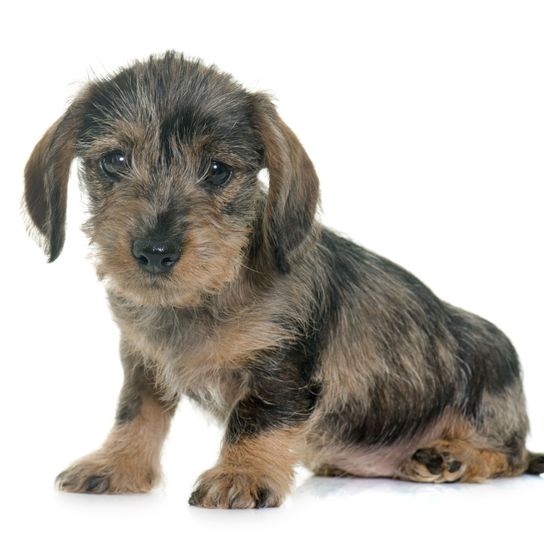
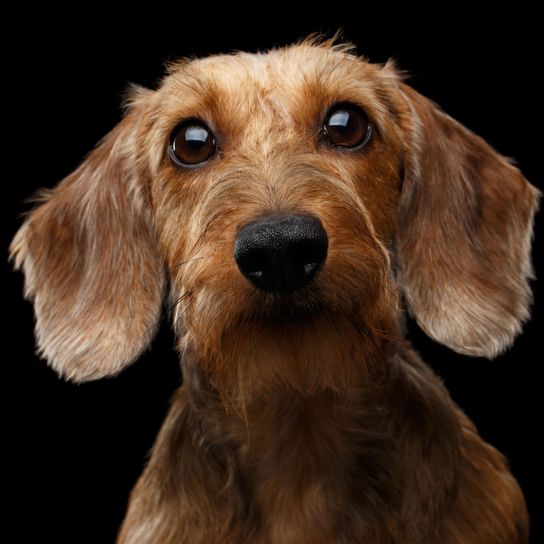
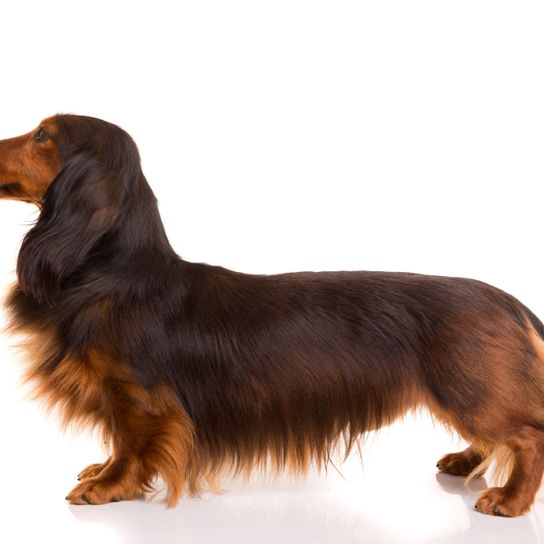
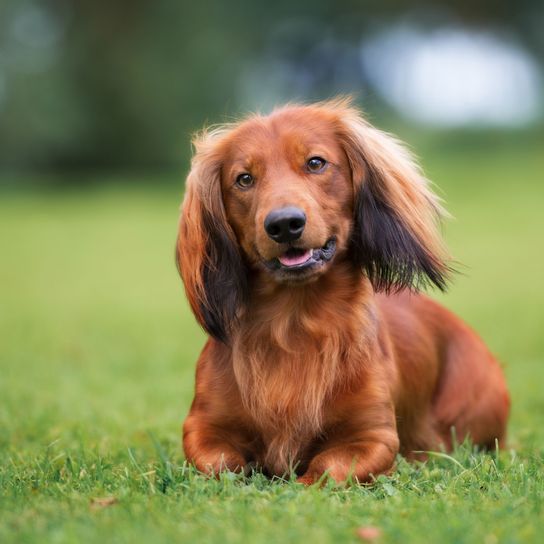
| Alternate Name | Sausage Dog, Teckel |
| Origin | Germany |
| Life expectancy | 12 - 16 years |
| Care requirements | low-maintenance |
| Activity level | average |
| FCI group | Dachshunds |
| AKC group | Hound Group |
| KC group | not recognised |
Dachshund mixes
Attitude, character and temperament of the breed
What are the typical character traits of the Dachshund?
Although the Dachshund is a small dog and a faithful family and companion dog, it is not an acquiescent lap dog. If you want to buy a Dachshund, you should be prepared for an agile, adventurous and curious four-legged friend. Although Dachshunds are also suitable for first-time owners and can be kept in the apartment without any problems, the dog owners themselves should at the same time be very active and adventurous.
The Dachshund is also:
- bold and confident
- strong-willed and persistent
- stubborn, but nevertheless
-
Dachshunds are very friendly dogs, but will never be submissive. These dogs are very balanced, they are not afraid of any situation and are not prone to being aggressive. If the Dachshund is not used for hunting purposes, then its should at least be able to put its energy to good use by doing dog sports.
Since Dachshunds can be a bit stubborn, consistency in training and a loving treatment is a necessity. It is also advisable to attend dog school with your Dachshund puppy and to socialise your four-legged friend well from the beginning. Also the innate hunting instinct of the Dachshunds should not be underestimated.
Character
Usage
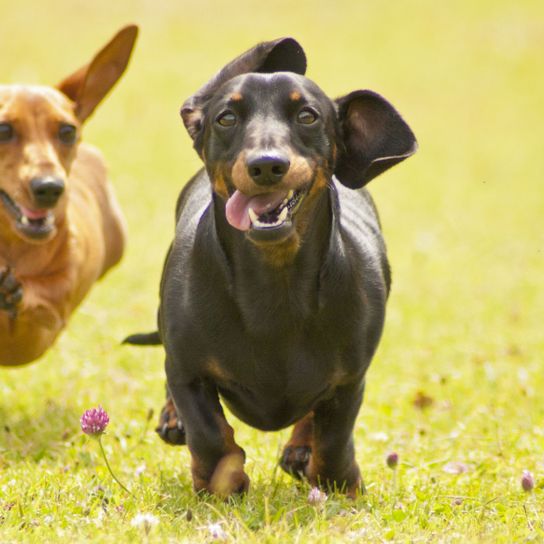

Health and breeding information
What are typical Dachshund diseases?
The most common disease of Dachshunds is the so-called Dachshund paralysis. This is similar to a slipped disc and is caused by the extended length of the spinal column. Nerves are disconnected and the animal begins to limp. Although the disease is not curable, it can be managed with consistent exercise and rehabilitation.
As a preventive measure, sufficient exercise and, of course, a healthy diet is the only way to prevent this. Overweight is very harmful for Dachshunds. Therefore, dog owners must be very consistent with this and need to suppress the urge to give in to these animals that like to beg for food.
Rough-haired Dachshunds suffer from Dachshund paralysis less frequently than other types.
What is to be considered in regards to Dachshund breeding?
It is important that only experienced breeders are allowed to breed Dachshunds. Anything else would purely be a multiplication of animals and is neither beneficial to the preservation of the species nor to the health of the animals. If you want to buy a Dachshund puppy, you should look for an experienced breeder. Dachshunds offered at markets, in Eastern Europe or on parking lots are not recommended. There is always a high residual health risk.
A good breeder informs themselves about genetics, tests the parent animals for hereditary diseases and only mates healthy animals with each other.
A Dachshund costs between 500 and 1000 Euros. Special colours sometimes cost 1500 Euros.


Appearance and coat of the Dachshund
The Dachshund can have long hair, short hair or rough hair. In the short-haired version the coat is smooth and close to the skin. Rough-haired Dachshunds are shaggy and wiry. In the long-haired Dachshunds the coat is silky, long and soft. Dachshunds can have many different colours. The original type of Dachshund is black and red. But they can also be red, red-yellow, black, brown, rust, wild boar-coloured, striped or brindled. There are also Dachshunds that present themselves in merle.
What is the average size of the Dachshund?
The Rabbit Dachshund grows to a maximum height of 30 cm. The Dwarf Dachshund reaches between 30 cm and 35 cm in height and the regular Dachshund reaches a height of about 35 cm. Usually, like it is the case for most other dog breeds too, Dachshund males grow somewhat bigger and heavier than bitches.
How much does a dachshund weigh?
The Rabbit Dachshund only weighs about 4 kg. The Dwarf Dachshund reaches a weight of 6 kg to 7 kg and the regular Dachshund reaches a maximum weight of 9 kg.
What is the average lifespan of the Dachshund?
A Dachshund reaches an age of about 13 to 16 years if kept in a species-appropriate manner, fed a healthy diet and provided they come from a good Dachshund breeding. When you bring a Dachshund puppy into your home, you must be aware of this long-time responsibility for a living being you are taking on. Even though Dachshunds are very easy to care for, it is still a task that comes with a responsibility.
| Fur length | short |
| Fur | rough-haired |
| Ear shape | Floppy Ear |
| Tail | short |
| Anatomy | strong |
| Size ♀ | 17 - 9 cm |
| Weight ♀ | 7 - 9 kg |
| Size ♂ | 17 - 27 cm |
| Weight ♂ | 7 - 9 kg |
| Suitable For | Seniors |
Colors

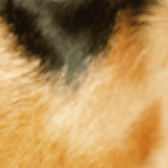
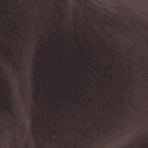

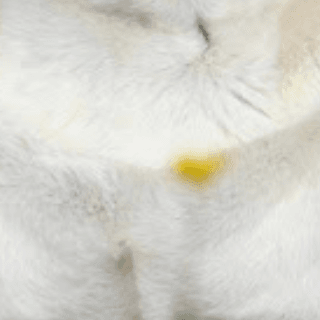
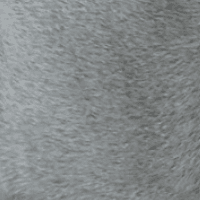
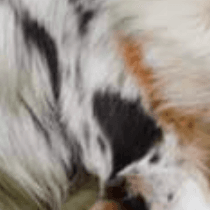
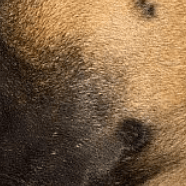



Known Diseases
Disc problems
Herniated disc in dogs (discopathy). Herniated discs or dachshund paralysis cause dogs severe pain.
Dachshund Paralysis
By dachshund paralysis (discopathy) veterinarians mean paralysis of the limbs in dogs.
Overweight
Often, unfortunately, the dogs very much under excess weight. But the dogs themselves are never to blame!
FAQ
-
Yes, the Dachshund can be kept as a family dog.
-
A Dachshund is a hunting dog and is often kept as a family dog.
-
Yes, a dachshund can also stay alone. However, this must be trained. A maximum of 3-6 hours a dachshund should stay at home without people.
-
A dachshund puppy costs about 2000 euros. Depending on the coloration and whether he is bought with papers or not.
Other small dogs
Useful Articles

You can find articles that might interest you in the dogbible blog to match your favorite breed.
Visit our magazineto stay up to date on dog trends.
To find out more, view our Privacy Policy
Find here the breed that suits you and find out what character traits it has. Here you can also learn more about the origin, size and weight of your favorite breeds.
Matching your favorite breed, you'll find articles that might interest you on the dogbible dog blog.
Keep your eyes open when buying a puppy
Kennel cough - If your dog coughs, you should know this disease
Dog toys - what you have to watch out for





